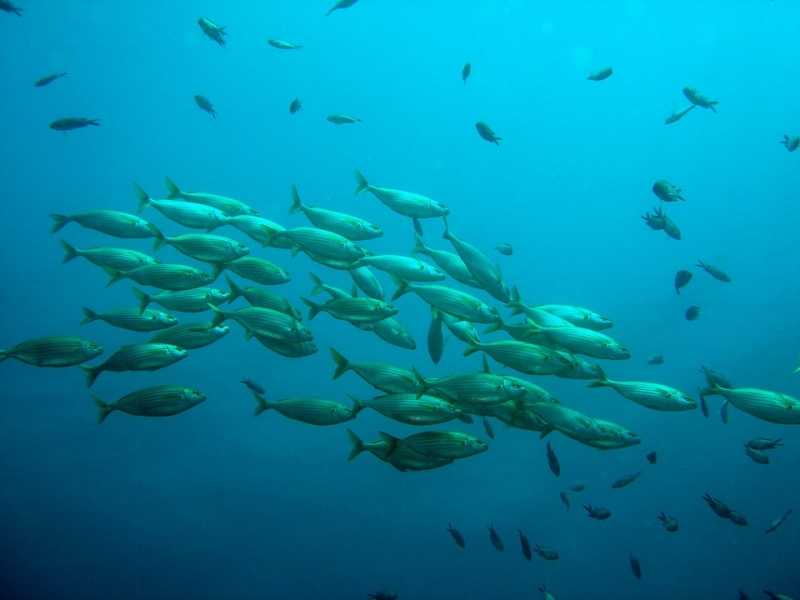With summer in full swing and trips to the beach on our minds, the timing is perfect to consider the role of environmental law and the courts in guiding decisions with implications for the health of our oceans. This blog highlights recent updates from two major federal players with authority over what happens in the waters of the United States covering the three- to 200-mile exclusive economic zone (EEZ): the National Oceanic and Atmospheric Administration (NOAA) and the U.S. Department of the Interior (DOI).
NOAA is charged with enforcing over 40 laws relating to conservation and management of the oceans, including protection of endangered species, marine mammals, national marine sanctuaries, and marine monuments. But NOAA’s most impactful resource management authority is the Magnuson-Stevens Fishery Conservation and Management Act (MSA). Enacted in 1976, the MSA is the primary law governing marine fishery management in federal waters of the U.S. EEZ—and also governs U.S. fishermen on the high seas. The 1976 law claimed U.S. control over the fishery resources within 200 miles, but delegated key decisionmaking authority to unique regional management bodies governed jointly by states, the fishing industry, and the federal government.
 The United States gained control over these fisheries from other nations, but until recently, did not manage them wisely. By the 1990s, weak statutory standards and limited oversight led to major U.S. fishery failures, particularly the collapse of the northeastern groundfish fishery. This failure galvanized a major 1996 overhaul intended to end overfishing, rebuild stocks, and protect essential fish habitat. But an avalanche of litigation crippled NOAA, both because of weak standards and lack of infrastructure and funding. In 2000, the situation hit rock bottom when the D.C. Circuit declared that, “’Only in Superman Comics’ Bizarro world, where reality is turned upside down, could the Service reasonably conclude that a measure that is at least four times as likely to fail as to succeed offers a ‘fairly high level of confidence.’”
The United States gained control over these fisheries from other nations, but until recently, did not manage them wisely. By the 1990s, weak statutory standards and limited oversight led to major U.S. fishery failures, particularly the collapse of the northeastern groundfish fishery. This failure galvanized a major 1996 overhaul intended to end overfishing, rebuild stocks, and protect essential fish habitat. But an avalanche of litigation crippled NOAA, both because of weak standards and lack of infrastructure and funding. In 2000, the situation hit rock bottom when the D.C. Circuit declared that, “’Only in Superman Comics’ Bizarro world, where reality is turned upside down, could the Service reasonably conclude that a measure that is at least four times as likely to fail as to succeed offers a ‘fairly high level of confidence.’”
To stabilize the legal regime and reverse fishery declines, Congress increased resources and in 2006 reformed the law to require science-based decisionmaking and gave NOAA clear authority to ensure accountability. The law has been enforced across the Bush, Obama, and Trump Administrations and upheld by courts, including a D.C. District Court decision to uphold a rule to require traceability for seafood imports. The result has been an ocean fishery and conservation success story of global significance—the United States leads the world in fishery management, with the vast majority of federal fish stocks recovered or on the road to recovery. By contrast, global fisheries are at their limits or severely overfished, and pressures are mounting to use this ocean space—even the deep and twilight zones—to meet global demands for food and other resources.
In the United States, commercial and recreational fishing groups are joining others to oppose actions they believe adversely affect sustainable fisheries. In 2018, fierce opposition by fishing and other groups to an Administration proposal to authorize aquaculture operations in federal waters under the MSA resulted in a court ruling that NOAA lacks such authority. NOAA will likely appeal this ruling to the Fifth Circuit and Congress is considering legislation. Citing impacts on the world’s largest sockeye salmon fishery, fishermen and others are opposing the proposed Alaska Pebble Mine permit and environmental review process, as well as the Administration’s decision in August to withdraw EPA’s option to veto the project under Clean Water Act authority, as was proposed in 2014. A similar pattern exists for offshore development proposals within the purview of DOI. Thus, while federal policy under NOAA’s watch has come a long way, rough waters lie ahead, as is the case for NOAA’s sister agency DOI.
DOI is responsible for administering the Outer Continental Shelf Lands Act (OCSLA), which generally covers the area between three and 200 nautical miles from the shore. Under this authority, DOI is responsible for the management of oil and gas leasing, offshore renewable activity, and mineral exploration, principally under the oversight of the Bureau of Ocean Energy Management (BOEM). DOI is also responsible for the protection of endangered species and critical habitat located offshore through the U.S. Fish & Wildlife Service (FWS), such as sea turtles. In addition, DOI, with NOAA, manages marine national monuments offshore under the Antiquities Act, such as the Northeast Canyons and Seamounts, which was recently upheld as a valid designation by a D.C. district court.
To say the least, there has been much activity in the Outer Continental Shelf due to the transition from the Obama Administration to the Trump Administration. First, former President Obama’s withdrawal of waters in the Arctic and Atlantic from energy development survived an attempted reversal by the current Administration. In March, 2019, an Alaska federal court struck down President Trump’s Executive Order reversal of President Obama’s withdrawal under Section 12(a) of OCSLA to protect vast areas of the Arctic Ocean and underground canyons in the northeast Atlantic. Central to the court’s ruling was OSCLA’s language authorizing presidents to issue withdrawals, but is silent regarding presidential authority to reverse such withdrawals. The court found that Congress, under the Delegation Clause (Art. IV), did not vest the president with the authority to reverse a prior OCSLA withdrawal. The Trump Administration is currently appealing this decision.
 In light of this decision, DOI Secretary David Bernhardt paused the OCSLA 5-Year Planning process that determines which areas offshore are available for development (the current plan covers 2017-2022). This pause likely has put to rest former Secretary Ryan Zinke’s abrupt pronouncement that the Atlantic Ocean could be opened for oil and gas drilling, which would require a drastic revision to the current 5-Year Plan. The bipartisan opposition by Atlantic Coast governors who highly value their beaches and tourism economy was likely a factor as well. Images of Deepwater Horizon are also at front of mind, along with current DOI efforts to deregulate offshore drilling.
In light of this decision, DOI Secretary David Bernhardt paused the OCSLA 5-Year Planning process that determines which areas offshore are available for development (the current plan covers 2017-2022). This pause likely has put to rest former Secretary Ryan Zinke’s abrupt pronouncement that the Atlantic Ocean could be opened for oil and gas drilling, which would require a drastic revision to the current 5-Year Plan. The bipartisan opposition by Atlantic Coast governors who highly value their beaches and tourism economy was likely a factor as well. Images of Deepwater Horizon are also at front of mind, along with current DOI efforts to deregulate offshore drilling.
Meanwhile, the one area DOI has not made a sharp reversal is with offshore wind. There are several commercial leases in early stages offshore Atlantic, buttressed by coastal states’ renewable energy targets. BOEM’s current four-phased approach under OCSLA, including more rigorous NEPA review at the fourth stage of construction and operation, was also recently upheld by the D.C. district court in the case of Fisheries Survival Fund v. Jewell. Challenging issues remain on the horizon, however, including development of transmission capacity offshore, adequate construction vessel fleets, and opposition from fisheries and tourism stakeholders. Most recently, BOEM’s unexpected announcement of broader cumulative impact NEPA analyses in light of multiple neighboring wind projects and fisheries’ opposition has caused a troubling delay for the Vineyard Wind project offshore Martha’s Vineyard. Hopefully that announcement arises from unique issues for that particular project, and doesn’t signal broader issues for offshore wind more generally. Other project developers are watching closely and taking notes to avoid a similar fate.
One area that remains an open question is the current Administration’s recent release of “A Federal Strategy to Ensure a Reliable Supply of Critical Minerals,” which directs DOI to locate domestic supplies of minerals, including BOEM who must conduct a review for mineral permitting in the Outer Continental Shelf and the EEZ in partnership with NOAA. Previously in May of 2018, DOI released a list of 35 minerals deemed critical to the U.S. economy. DOI will have to confront tough issues, including the scope of environmental reviews, such as under NEPA, the National Historic Preservation Act, and the Endangered Species Act, how subsea mineral exploratory activity will impact existing leases and other offshore uses, OCSLA’s requirement that exploration must provide for protection of the environment and conservation of the ocean’s natural resources, and the threat of any private citizen suits under OCSLA. DOI has much to consider before any actual exploratory action occurs within our EEZ. Already, expert and public concern is growing over the International Seabed Authority’s plans to allow exploration and mining of deep sea minerals beyond national jurisdiction under the U.N. Convention on the Law of the Sea, because of the lack of information about baseline conditions and environmental impacts.
In sum, there is much activity in our nation’s oceans and much work for lawyers to return to after a restful summer break at the beach.
